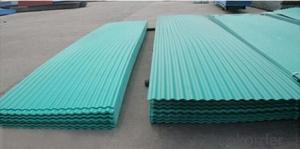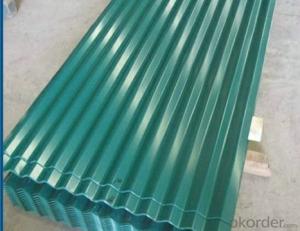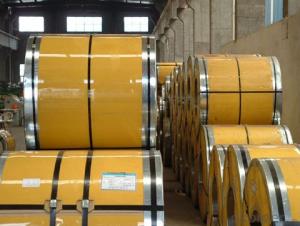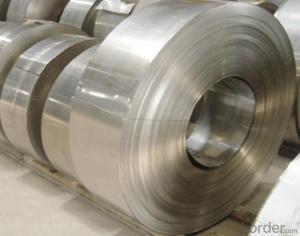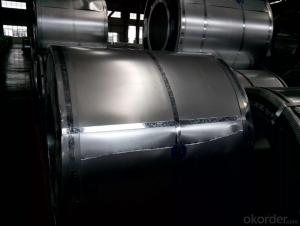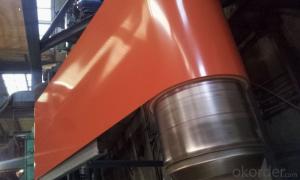Premium Green Colored Corrugated Roofing Metal Sheet
- Loading Port:
- Tianjin
- Payment Terms:
- TT OR LC
- Min Order Qty:
- 25 m.t.
- Supply Capability:
- 2000 m.t./month
OKorder Service Pledge
OKorder Financial Service
You Might Also Like
Item specifice
Product Brief Introduction
Premium Green Colored Corrugated Roofing Metal Sheet
--- Corrosion resistance: Pre-coated steel offers excellent corrosion resistance achived through continuous hot DIP galvanization and corrosion resistant primer/polyester coating. Protection is achieved when zinc and steel are together in the presence of moisture; The zinc protects the steel by galvanic action
Product Specification
Standard:ASTM, GB,JIS,JIS G3302 ASTM 755 EN10169
Grade: DX51D CGCC CS
Thickness: 0.13mm~3.0mm,
Width: 1250,600-1250mm
Chemical composition:
C | Si | Mn | Cr | Ni | P | S |
0.150 | 0.476 | 11.231 | 12.50 | 0.900 | 0.039 | 0.010
|
FAQ
How long will we receive the goods ?
45days after receiving workable L/C
2. how do you control the quality ?
we have our own quality control department ,we will arrange QC person to see the production line ,when goods finish ,before shipment ,our QC person will check the quality as per our test report request ,if the goods is ok ,then we issue the test report ,and we allow the goods shipping ,otherwise will not allow ship the goods.
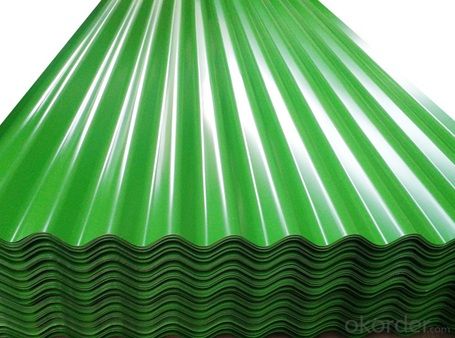
- Q:How are steel strips protected during storage and shipment?
- Steel strips are typically protected during storage and shipment through a variety of measures. This includes applying a protective coating or oil to prevent corrosion, using rust-resistant packaging materials such as plastic or paper, and ensuring proper stacking and secure strapping to prevent damage or shifting during transit. Additionally, climate-controlled storage facilities may be utilized to maintain optimal conditions and prevent moisture-related issues.
- Q:What are the main factors affecting the strength of steel strips?
- The main factors affecting the strength of steel strips are the composition of the steel, the heat treatment process, the rolling and annealing processes, and the presence of any impurities or defects in the steel.
- Q:Can steel strips be used in solar panel frames?
- Yes, steel strips can be used in solar panel frames. Steel is a strong and durable material that can provide the necessary structural support for solar panels. It is commonly used in the construction of solar panel frames due to its strength, cost-effectiveness, and ability to withstand various weather conditions.
- Q:Can steel strips be used in the food industry?
- Yes, steel strips can be used in the food industry. Stainless steel strips are commonly used in the food industry due to their excellent corrosion resistance, durability, and hygienic properties. They are used in various applications such as food processing equipment, conveyor systems, storage tanks, and packaging machinery. Stainless steel strips are easy to clean and maintain, making them suitable for applications where hygiene and cleanliness are essential. Additionally, stainless steel is non-reactive to food substances, ensuring that the quality and taste of the food are not affected. Therefore, steel strips are a reliable and widely accepted material in the food industry.
- Q:What is the typical width tolerance for steel strips?
- The typical width tolerance for steel strips can vary depending on the specific application and industry standards. However, in general, it is common for steel strips to have a width tolerance ranging from +/- 0.005 to 0.010 inches.
- Q:What are the cost considerations for using steel strips?
- The cost considerations for using steel strips include the price of the steel itself, the cost of transportation, any additional processing or fabrication required, and potential maintenance expenses. Additionally, factors such as market demand, availability, and fluctuations in steel prices can also impact the overall cost of using steel strips.
- Q:How are steel strips used in the production of metal signage?
- Metal signage relies heavily on steel strips, which serve as a critical component. These strips offer structural support and durability, making them indispensable in the production of such signs. Typically, steel strips act as the foundational material for metal signage. They are carefully cut to the desired size and shape, serving as the building blocks upon which the sign is constructed. The selection of these strips is based on their strength and ability to withstand various environmental conditions, ensuring the longevity of the signage. During the manufacturing process, steel strips often undergo a protective coating to prevent rusting and corrosion. This additional layer enhances their durability and can take the form of paint, powder coating, or galvanization, depending on the specific needs of the signage. Moreover, steel strips are utilized to create raised or embossed lettering on the signage. These strips are precisely shaped and molded to form the desired text or design. This technique adds a visually appealing and three-dimensional aspect to the sign, increasing its attractiveness and professionalism. Furthermore, steel strips serve as the means for mounting the metal signage. They can be securely attached to walls, posts, or other structures through welding or screws. This ensures the stability and visibility of the signage, even in adverse weather conditions. In summary, steel strips play an integral role in the production of metal signage. Their strength, durability, and versatility make them essential for creating visually appealing and long-lasting signs.
- Q:What are the research and development efforts in steel strip technology?
- Various areas have been the focus of research and development efforts in steel strip technology, with the goal of improving the quality, performance, and efficiency of steel strip production. One particular area of research involves the development of advanced steel strip alloys that possess enhanced mechanical properties, such as increased strength and enhanced resistance to corrosion. This entails analyzing the microstructure and composition of different alloys and optimizing their processing parameters in order to achieve the desired properties. Improving manufacturing processes is another important aspect of research and development in steel strip technology. Innovations in processing techniques, such as continuous casting, hot rolling, and annealing, have been pursued in order to produce steel strip of high quality with minimal defects and dimensional consistency. The impact of process variables, such as temperature, rolling speed, and cooling rate, on the final product properties is also studied. Furthermore, efforts are being made to explore new coating and surface treatment technologies for steel strip. The objective of these endeavors is to enhance the surface properties of steel strip, including corrosion resistance, paint adhesion, and aesthetic appearance. Various coating techniques, such as electroplating, hot-dip galvanizing, and organic coatings, are being examined to identify the most effective and environmentally friendly solutions. Additionally, research in steel strip technology is also directed towards improving the energy efficiency and sustainability of steel strip production. This involves developing energy-saving processes, implementing recycling techniques for waste materials, and utilizing renewable energy sources in the manufacturing of steel strip. In summary, the research and development efforts in steel strip technology are focused on continuously enhancing the quality, performance, and sustainability of steel strip products to meet the evolving demands of industries such as automotive, construction, and packaging.
- Q:How are steel strips processed for assembling?
- Steel strips are processed for assembling through a series of steps such as cutting, slitting, and shaping. These processes involve using specialized machinery to create precise dimensions, remove any imperfections, and shape the strips according to the desired specifications. The processed steel strips are then ready to be assembled into various products or structures.
- Q:Can steel strips be galvanized?
- Indeed, it is possible to galvanize steel strips. Galvanization involves the application of a protective zinc coating to steel in order to hinder corrosion. This technique is applicable to different types of steel, comprising steel strips. By galvanizing steel strips, their durability and resistance to rust and corrosion are significantly improved, rendering them suitable for a diverse array of applications in industries such as construction, automotive, and manufacturing.
1. Manufacturer Overview |
|
|---|---|
| Location | |
| Year Established | |
| Annual Output Value | |
| Main Markets | |
| Company Certifications | |
2. Manufacturer Certificates |
|
|---|---|
| a) Certification Name | |
| Range | |
| Reference | |
| Validity Period | |
3. Manufacturer Capability |
|
|---|---|
| a)Trade Capacity | |
| Nearest Port | |
| Export Percentage | |
| No.of Employees in Trade Department | |
| Language Spoken: | |
| b)Factory Information | |
| Factory Size: | |
| No. of Production Lines | |
| Contract Manufacturing | |
| Product Price Range | |
Send your message to us
Premium Green Colored Corrugated Roofing Metal Sheet
- Loading Port:
- Tianjin
- Payment Terms:
- TT OR LC
- Min Order Qty:
- 25 m.t.
- Supply Capability:
- 2000 m.t./month
OKorder Service Pledge
OKorder Financial Service
Similar products
New products
Hot products
Hot Searches
Related keywords

